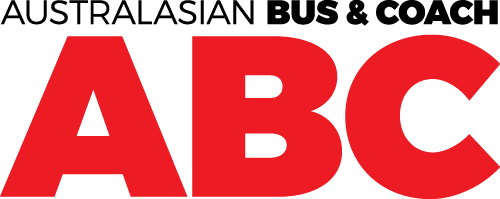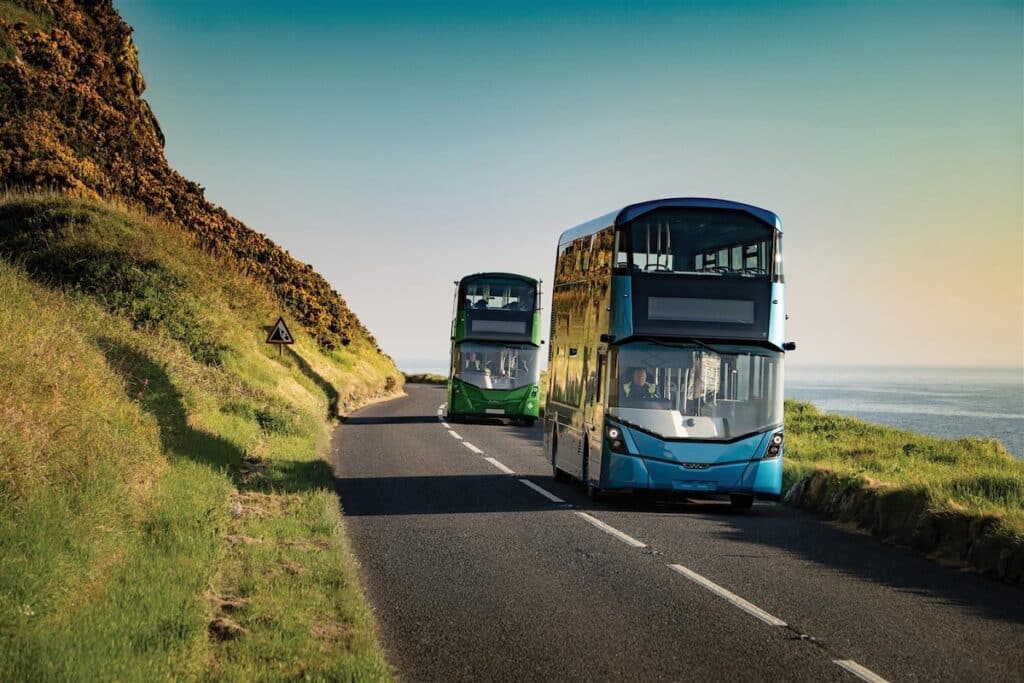It’s been a few years since Wrightbus last made an impact in the Australian market. With a rich global history that started with rebodying lorries in 1946, the Northern Irish based manufacturer first cracked into the local market when operator ACTION ordered 25 Dennis Darts with Wright Crusader bodies.
A couple of decades of expansion halted in 2019 when Wrightbus entered administration, with Jo Bamford acquiring the business in October. Since then, the manufacturer has been building back its base through zero-emissions buses. Now, it’s ready to make a splash once again in Australia this year.
- Subscribe to our free weekly newsletter to receive the latest news and classifieds from Australasia’s bus and coach industry
- Don’t miss a second and subscribe to our monthly ABC magazine
With former Bus Industry Confederation (BIC) vice chair and Scania Australia Bus and Power Solutions director of sales Julian Gurney now at the helm of the brand’s Australian expansion, Wrightbus is entering the local space with a fresh twist.
“Wrightbus’ introduction back into Australia is through two hydrogen fuel-cell electric vehicles with Volgren bodies that are going on trial at Queensland’s Department of Transport and Main Roads,” Gurney told ABC.
“I was recently in Queensland to look at the vehicles undergoing pre-delivery processing and homologation, and we hope to have them out operating by the end of this quarter or early in quarter two.”
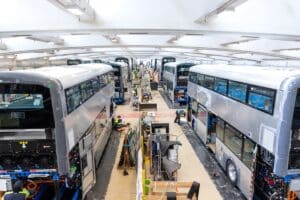
Once they’re out on the roads, they’ll be working from CDC’s Sunshine Coast base. Gurney says he’s excited for Queensland to have some alternative fuel vehicles on the roads – it’s this sustainable shift that has excited Gurney to move across to the UK-based brand.
“One of the reasons I did decide to make the changes across to Wrightbus was to deal more with zero-emissions buses, particularly fuel-cell electric vehicles,” Gurney says.
“I have a degree in applied science and environmental management, so I believe that hydrogen and battery electric vehicles have their place – I’m keen to see hydrogen technology take off in Australia.”
He says that the federal government is currently pushing for the increased production of hydrogen in Australia, which is music to his ears. In his view, hydrogen is “a more viable option” for the future due to its possibilities on long-distance coaches.
With Transport for NSW (TfNSW) allocation the first wave of electric bus orders for Sydney late last year, Gurney can see the tide shifting towards zero-emissions models. Whether it be in Sydney or Melbourne’s new bus franchise, he’s hoping the entire country follows suit and embraces the new technology on offer.
“An expression of interest is also out in Queensland and other jurisdictions are starting their zero-emissions journeys, so it’s a wonderful time for the industry,” Gurney says.
“It’ll be a big bonus for the travelling public five to 10 years down the track, being able to take quiet and cool vehicles.”
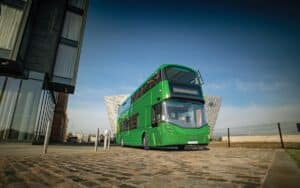
Gurney started his time at Wrightbus by heading over to Wrightbus’ factory in Ballymena late last year. What he saw left him impressed and excited for what lay ahead in Australia.
“About 95 per cent of the vehicles in the plant were zero-emissions,” he says.
This follows the company’s major deal late last year with global operator Go Ahead Group, a subsidiary of Kinetic. The 500 million pound deal will see Wrightbus supply Go Ahead with 1,200 vehicles over three years, bringing the brand back into the fold for UK operators.
Earlier this year, Wrightbus celebrated its strongest start to a year ever by launching its new brand Rightech. The line-up includes two trucks and two buses – a six-metre and nine-metre option, with Wrightbus initially aiming to sell these across the UK, Ireland and Europe.
Locally, Wrightbus’ hydrogen project was launched in October when Volgren unveiled the pair’s collaboration. It will be powered by Wrightbus’ NexGen hydrogen fuel-cell powertrains.
“In Australia, the sensible approach is to focus purely on securing the launch of our fuel-cell electric buses in Queensland and ensuring the trial goes to plan,” Gurney says.
“We’re working with fuel supply partners in Queensland to ensure the vehicles are given every opportunity to perform the way we want them too. We want to become a well-renowned professional service delivery partner.”
Gurney expects the vehicle to be “a step ahead” of the current local competition once it hits the road, with Wrightbus’ technology continually evolving through collaborations with institutions such as Belfast’s Queen’s University. On top of this, Wrightbus also has a partnership with W-Tech to create a software package used by large European and UK operators for route analysis.
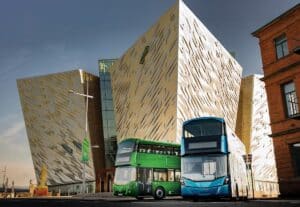
“In terms of additional works, it’s about bringing the information to all the private operators around Australia, as well as chatting to various state jurisdictions, departments of transport and senior management to let them know what Wrightbus has in terms of product availability,” he says.
“We have single deck vehicles, but also two and three axle double-decker buses. It wasn’t all that long ago that two axle double deckers ran around Sydney – how exciting would it be to see that again?
“We’re also looking at high capacity zero-emissions buses and bringing double-decker three axle models to Queensland, NSW, Victoria, South Australia and possibly Western Australia on bus rapid transit routes.”
Gurney will continue having these discussions with private operators and state jurisdictions to understand where Wrightbus fits into the local landscape. He knows the offering he brings is unique in the current market.
“I want to voice my appreciation for clients I have caught up with since starting with Wrightbus on January 6,” he says.
“I’ve been afforded time with quite a few private operators and state transport departments – it’s been very appreciated.
“Everybody is keen to learn about what alternatives there are in the market compared to traditional models seen.”

